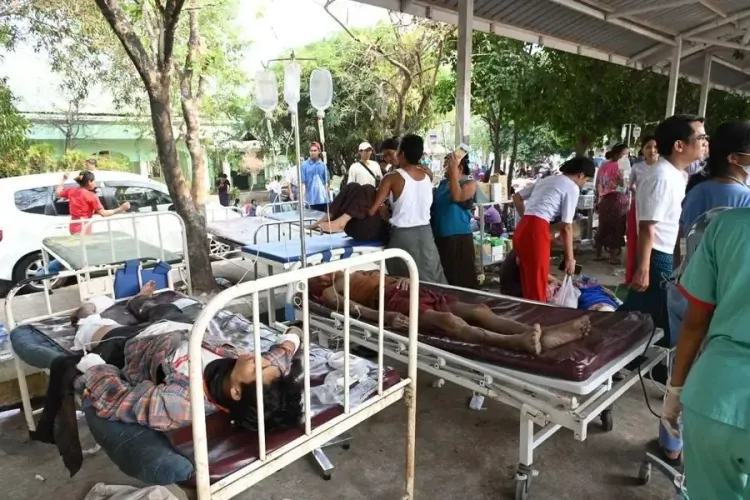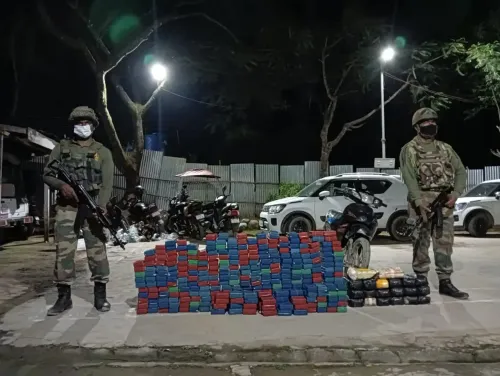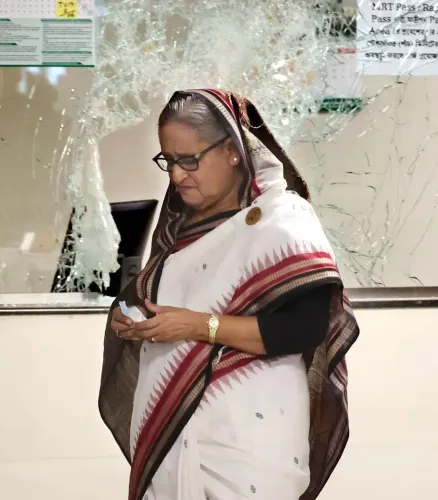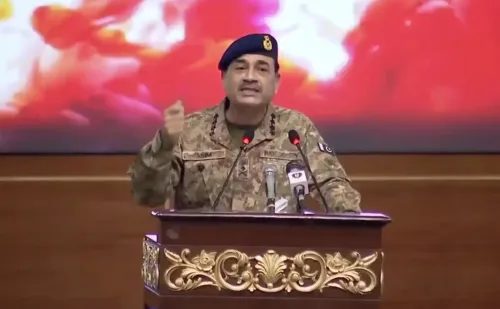How Many Survivors Were Rescued After Myanmar's Earthquake?

Synopsis
Key Takeaways
- 653 survivors rescued by emergency teams.
- 7.7-magnitude earthquake struck Myanmar on March 28.
- Over 200,000 people displaced due to the disaster.
- International aid includes 337 foreign medical personnel.
- Plans for earthquake-resistant housing are underway.
Yangon, May 2 (NationPress) Emergency teams have successfully rescued 653 survivors following the devastating 7.7-magnitude earthquake that struck Myanmar, according to the state-owned daily Myanma Alinn. Search and rescue operations were conducted by both local and international teams, who also recovered 779 bodies as of Thursday.
The earthquake, which occurred on March 28, has resulted in 3,835 fatalities and left 5,105 individuals injured, with 105 people still missing, as reported by the Xinhua news agency.
Myanmar has faced a total of 157 aftershocks following this catastrophic event, with magnitudes ranging from 2.8 to 7.5.
More than 200,000 residents have been displaced due to the earthquake, as stated by the National Disaster Management Committee (NDMC).
During the NDMC's third meeting of the year, held on Friday in Nay Pyi Taw, Chairman Vice Senior General Soe Win indicated that the earthquake resulted in extensive destruction across 10 regions and states, including Nay Pyi Taw, Sagaing, Mandalay, Bago, Magway, and Shan.
Over 63,000 homes, 6,700 schools, 5,400 monasteries, and hundreds of other structures, including hospitals and bridges, have been damaged or destroyed.
International medical teams, comprising 337 foreign personnel, have established temporary hospitals in the most severely affected areas, providing care in collaboration with local health workers.
In response to a request for international aid from the Myanmar government, 2,095 rescue workers from 26 countries have arrived in Myanmar, delivering over 3,800 tonnes of relief supplies by air, sea, and land.
Authorities are assessing damaged buildings using a color-coded system—blue, orange, and red—to evaluate structural integrity and guide repairs.
Temporary accommodations, including bashas and modular shelters, are being constructed for displaced individuals. Plans are also being developed to rebuild homes using earthquake-resistant designs based on soil evaluations and fault-line studies.
Under 'Operation Brahma', India was the first to respond to the earthquake disaster, providing over 750 MT of essential relief supplies, including medicines, food, tents, blankets, and sanitation services.









